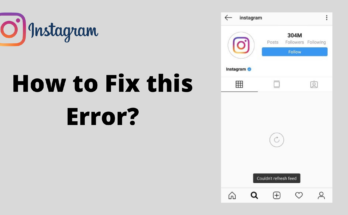[ad_1]
Share
Tweet
Share
Share
To be successful, every company has to know what its customers need. This makes market segmentation an essential part of your marketing strategy. A significant percentage of new products fail because their companies were unable to segment their potential market.
Every customer has very special requirements for the product. It is foolish to accept that everyone is the same. Through market segmentation, companies can divide their customers into different groups, establish their requirements and address them accordingly.
This gives any company a competitive advantage because whoever understands the tactics of segmenting the market will eventually dominate it. Here's everything you need to know about marketing segmentation and its types.
What is market segmentation?
If you are thinking about what segmentation is in marketing let us tell you that it is a very simple exercise. It's the process of breaking your market down into smaller categories. With this segmentation, you prepare separate categories of your customers based on their interests, demographics, needs and their location.
The segmentation of your market gives you detailed insights into your customers. You can determine what is needed in your market segment and then decide how your product will meet those needs.
By segmenting the market, companies can understand how the market reacts in certain situations. For example, a company can decipher the answers to a survey in a certain customer segment if their product is answered positively by them.
Advantages of Market Segmentation
Before we proceed, we need to understand why companies should segment the market. Let's look at some of the advantages.
Build Strong Marketing Campaigns
When you know all the details of your customer base, it is obvious that you are creating clear marketing messages. You will avoid any vague language as you will have a good idea of the client's psyche. It's like speaking to him directly, with no barriers in between.
Finding the Most Effective Marketing Strategies
The field of marketing is huge and you have to work hard to find out which method will produce the best results. By segmenting your market base, you can choose the strategies that you know will be successful.
Attract and Convert Leads
You send your customers the right marketing messages. On the other hand, they understand what you are trying to say and learn more about you. Once that happens, it will be a matter of time before this lead converts and becomes a loyal customer.
You already know the details of your customers and their preferences. The advertisements that you place on digital advertising space are created with this information in mind. These advertising campaigns are likely to be more effective because you simply know what the customer needs.
Gaining a foothold in front of the competition
Nowadays every market has many players who compete for the same customer segment. However, if you are specific with your branding campaigns, the customer would prefer you over the other players. Instead of fighting for his attention, build an online presence in his head that will increase brand recognition.
Identifying Niche Market Opportunities
If you think your product is only suitable for a specific group, then marketing segmentation is even more valuable. You can only focus on the group that has the propensity to buy the product. This saves you both effort and money, since you only work in the areas that are necessary.
Build a bond with your customer
Brands are more than just products for customers these days. For some of them, these brands are more about the experience they offer. When you create such a valuable experience for them thanks to segmentation, they'll appreciate the effort. This level of trust will also be maintained in the future, as you know that you will only deliver the best possible product quality.
Types of market segmentation
In most places, segmentation is done using the following parameters:
Demographic segmentation Psychographic segmentation Geographic segmentation Behavioral segmentation Firmographic segmentation
Let's talk about this in detail here.
Demographic segmentation
Demography is the first criterion when we talk about segmentation marketing. While it's the easiest way, it's also the most powerful. In demographic segmentation, you look at a customer based on factors such as:
Age Ethnicity Gender Income Education level Religion Occupation or title in a company
The demographic segmentation makes many things clear. For example, if your product is only 20 to 30 years old, there is no point in spending money on targeting people who are not in this age group.
Market segmentation is really not just about speaking effectively to your customers. It is also about only reaching customers who show genuine interest.
Psychographic Segmentation
The second is psychographic segmentation, which separates customers based on their personality traits. The criteria for a psychographic segmentation include:
Personality attributes Values Interests Lifestyle attitudes Psychological influences Conscious and unconscious beliefs of the person Priorities Motivations
Unfortunately, the psychographic segmentation is slightly subjective. Therefore, a differentiation is more difficult compared to a demographic segmentation. Since there is no data to prove its existence, adequate research is required to find out and understand the details.
As an example, a luxury hotel brand would like to address customers who travel first class and appreciate high-end products. You can use psychographics to create a brand personality that illustrates your client's personality traits.
For example, your marketing team finds that your customers buy new athletic shoes every year. This implies that they are pretty focused on their fitness and believe in living their life hard. Now you can focus on these attributes to project your shoes for those who are solid and fast moving.
Geographical segmentation
The most superficial segmentation criteria are based on geographical location. Some of the criteria that are included are:
City Country Postcode Climate Specific radius around a location Whether city or country
You can divide the geographical segmentation either by location (zip code, city) or type of area (such as climate or size). An example of geographic segmentation is a soda company targeting people who live in heat zones.
The geographic segmentation can also include regions that are not defined like your neighborhoods. For example, a company that sells home cleaning services may initially want to target homes near where it currently operates.
Behavioral segmentation
So far, demographic and psychographic segmentation has focused on your customers. Behavior segmentation focuses on how he will act or react. These include:
Buying habits, spending habits, Brand interactions, User status
With behavioral segmentation, you need to ask about your customers' actions. These actions could include how that customer base interacted with your brand. An example could be a luxury car company aimed at people who have bought a luxury car in the past five years.
You can use behavioral segmentation to gain knowledge in the customer's mind space. For more information about his actions, ask the following questions.
How engaged is the customer through their interactions with you? At what times and when does the customer buy your product? How much time does he take during the buying process? As a company, how do you define a good customer?
Marketers also use behavior segmentation to find out all future leads and prospects in the market. Just like with psychography, you can measure his behavioral traits by the digital presence he maintains. Metadata is collected from the customers and this is analyzed in order to know their preferences.
Firmographic segmentation
Firmographic segmentation is used to separate companies and firms according to their type. Businesses could use this segmentation to find out if a smaller company is suitable for investing. You can easily break down potential businesses as follows:
Corporations Non-Profit Agencies Government Agencies Independent Contractors Small Businesses
Remember that there is always some risk when we talk about investing in a small business. Variables to look for in this case are:
Performance and Revenue Annual Sales Cycle Size and Number of Employees Ownership Type Organizational Trends
Common Market Segmentation Mistakes to Avoid
Defiance Focusing on segmentation, marketers tend to make mistakes. Some common ones that you shouldn't repeat are:
Create small or niche segments
Small segments can be very imprecise and difficult to target. In addition, an overly segmented group could provide you with data that is factually incorrect and therefore useless to you. Eventually, you might get distracted from your entire goal because the information you have is worthless.
Do not change segments
Even if the segments do not return any results, we do not care to change them. This renders the entire segmentation exercise pointless. After all, you need a solid ROI from your marketing efforts. If you ignore such a fundamental mistake, your marketing efforts will be wasted.
Ignoring new customer personalities
The interests and wishes of the customer are constantly changing. If you keep the old personas, you are denying recognition of the new changes and you are missing out on something like that. Very soon, each of your competitors would recognize this loophole and benefit from it. Keep doing the research and make changes in your segments based on any persona discrepancies you notice.
Companies believe that once they are done with segmentation, the benefits should start flowing now. However, this doesn't happen because segmentation is only the first step in your strategy. You need to start now by engaging customers by finding ways to interact. This could include conducting surveys, polls, and social media events to find out the exact details of your customers.
How to Set Up a Market Segmentation Strategy
Now that you know all about segmenting your customer base, it is important to establish a formal strategy for doing it. Read on to understand how to establish a market segmentation strategy.
1. Analyze Existing Customers
If you already have an existing customer base, first conduct an audience analysis for them. Use the following tricks to gain insight.
2. Interview the Customer
Go to the source first and interview existing customers, past customers, prospects, and ideal customers. Ask them questions that you think will help you fill in the gaps you need.
3. Interview the sales team
You have a sales team; their opinion is also important. Inquire about the trends they see in dealing with customers. After completing this exercise, you can define the market segment.
4. Refer to the business data
Your research efforts would have already produced a lot of data that you could look at. Use the different CRM tools to understand how your customer makes their purchase. Find out how much they spend, how often they come to your store, and what products they choose most often.
5. Use website analysis
Google Analytics can provide you with insights into which pages your customers visit, how long they stayed there and which websites took them there.
6. See what the customer is looking for
It is critical that you know which websites your ideal customer is visiting. Use tools to review the top 10 websites and find out the keywords that most of them are using. In addition, you can also check out the topics and themes that they are using to attract customers.
7. Create Buyer's Persona
Once you've completed the steps above, use the data to create a Buyer Persona. The Buyer Persona is like a description of your customer and helps you find the type of person who will buy your product.
8. Identify Marketing Segmentation Opportunities
Now that you have a Buyer Persona, look for all market segment opportunities. Ask yourself the following questions.
What problems will your brand solve? Which problems do you solve better than other competitors? What are the things that make you stand out? Whom do you want to serve? Which large segments are obviously shown? The most common customer qualities? Which segments did you not look at? Which segments does your brand serve?
9. Examine all of the potential segments you see
Before you implement a marketing campaign for a potential segment, see if it is a good idea. Do some basic keyword research to gauge interest from your customer base. You can use a keyword research tool to measure audience interest. Find out phrases that are of high interest but are not tapped by your competition.
Also consider what kind of competition there is in the market. Use a specific phrase to find brands that own the share of voice for it. Share of voice is the amount of traffic a given website receives for a given keyword.
10. Testing
After all of your work is done, you need to test your strategy. First, create a few campaigns. Try new markets and track the results to find the places where your customers appreciate you. Even small changes in the markets can produce significant results. Go through this process, test, and repeat your results for maximum returns.
Conclusion
Smart customer segmentation serves more than just one purpose for a company. You can focus all of your resources on reaching important customers. Marketing efforts are now focused on the needs of the customer. The budget you are working on will be geared towards meeting this need.
For any type of return, however, you need to know what type of segmentation to focus on. You have to analyze every decision your customer makes based on what they want and what they need. Market segmentation will help you spot these subtle signs. You can now speak to them directly without wasting resources on the wrong audience.
Whether you're alerting students to a new pair of headphones or wanting to share lounge chair information with people who live near beaches, segmentation gives you plenty of options for your customers to see you the way you want.
[ad_2]
Story continues…



